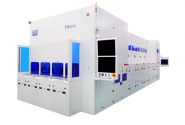Primarius NanoSpice™ Simulator to Accelerate the verification of CMOS Image Sensor is adopted by Skhynix
Primarius Technologies today announced that its
high-performance parallel SPICE simulator has been adopted by SKhynix to accelerate the verification of CIS chips. NanoSpice™ helps SKhynix’s customers to verify their designs with efficient CPUs arrangement, accuracy confidence, and better convergence on default mode.
CIS chips with the capacity and significantly improved level of quality, require fast and accurate circuit simulation and verification tools to support advanced IC designs.
provides good simulation convergence and accuracy, which helps SKhynix’s customers to design with confidence and shorten design cycle.
As a new generation parallel SPICE simulator,
was designed for the most challenging simulation with high-capacity and high-performance, such as large post-layout analog circuit simulations requiring capacity, speed, and accuracy simultaneously.
’s superior parallelization technologies handle generic circuit simulation with up to 50M+ circuit elements.
“SKhynix and Primarius have achieved joint success with
, which has embodied mainly in three aspects.
is so efficient that could be well used with 16 cores from just 1 license. And without any conditions, its default is as accurate as reference. Most importantly, it is usefully verified with CIS verification part.said Mr Changho,Do CAE VP at SK hynix.’
“SK hynix has been a long-time customer of our EDA products and we continue to improve our technology to meet the simulation challenges presented by CIS and Memory chips.” remarks Dr. Zhihong Liu, Primarius’ Chairman and CEO. “
fits the performance and accuracy requirements of the toughest design verification needs with its full range of simulation capacities from small blocks to full chip designs, and can help achieve goals that would be difficult to reach without our circuit simulation solutions.

